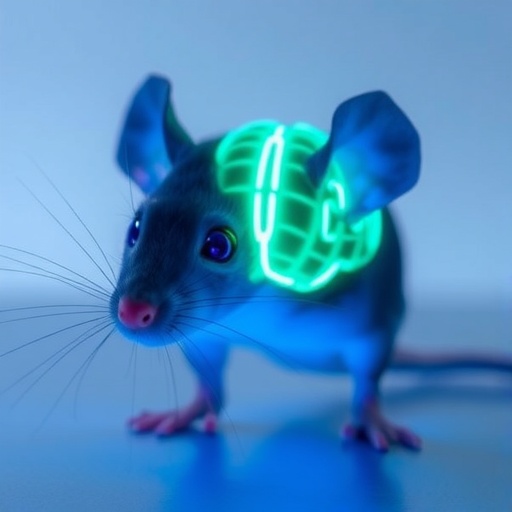In a groundbreaking study published in the renowned journal Cell, scientists at Columbia University’s Zuckerman Institute have unveiled a previously unknown brain region in mice that acts as a master regulator of feeding behavior, modulating the consumption of not just sugary foods, but also fats, salts, and other dietary components. This discovery sheds new light on the intricate neural circuitry underlying appetite and food intake, providing promising avenues for developing innovative treatments for eating disorders and cachexia — a severe wasting syndrome often seen in cancer patients.
The investigation began with a focus on how certain tastes, such as sweetness, trigger the compulsion to keep eating beyond physiological need. While we know that sweet flavors can stimulate appetite, researchers had struggled to identify the specific neural mechanisms that transform taste perception into the complex drive to consume. Using advanced neuroanatomical and optogenetic techniques, the team traced the pathway from sugar-sensitive neurons in the amygdala — the brain’s emotion center involved in evaluating pleasurable stimuli — to a lesser-known brain region called the bed nucleus of the stria terminalis (BNST).
Neurons in the central amygdala that responded selectively to sweet stimuli were found to project directly into the BNST, a structure historically implicated in processing stress and reward, but not previously understood to have a broad modulatory role in feeding behavior. When the researchers used targeted stimulation to activate these BNST neurons, mice that had recently eaten to fullness began consuming sweets again, indicating that this circuit can override satiety cues. Conversely, inhibiting the BNST neurons resulted in reduced sugar intake, even in hungry animals, demonstrating that this brain area acts as a powerful control point for consumption.
Further experiments expanded the scope of this neural “brain dial.” It was revealed that the BNST does not merely regulate sweet intake but is also essential for driving the consumption of salt, fats, and other palatable food components. This generalist role contrasts with many other brain circuits that respond selectively to specific tastes or food types, highlighting the BNST as a hub for coordinating a wide range of consummatory behaviors. Such integration ensures that animals can adjust their eating based both on sensory inputs and physiological needs.
The anatomical underpinnings of the BNST’s function are equally fascinating. Beyond connections with taste-processing regions, the BNST communicates extensively with brain systems involved in sensing internal states, such as hunger or electrolyte balance. For example, the region is linked to circuits that detect sodium deficiency, which triggers salt craving. This neural network enables the brain to harmonize external sensory information with internal bodily demands, fine-tuning feeding behavior to maintain homeostasis.
This discovery has profound implications for medical science, especially for patients undergoing chemotherapy who frequently develop cachexia, a debilitating condition marked by appetite loss and muscle wasting. In mouse models treated with chemotherapy drugs that induce a similar cachexia-like state, activating BNST neurons was found to preserve body weight and protect against the expected decline in consumption. These findings raise the exciting possibility that targeted stimulation of this brain circuit could alleviate cachexia symptoms, improving quality of life and treatment outcomes for cancer patients.
Moreover, the researchers noted that BNST neurons are a target of semaglutide, a widely used anti-obesity drug known to suppress appetite but also associated with adverse effects such as nausea. By elucidating the role of the BNST in appetite regulation, this work paves the way for developing more precise therapeutic strategies that modulate consummatory behavior without undesirable side effects. A refined understanding of the BNST might enable the design of interventions that better balance efficacy and tolerability.
Dr. Charles S. Zuker, the senior author and a leading figure in neurobiology, emphasized that this study “provides exciting new insights and identifies a brain center that orchestrates unified control over consummatory behaviors.” He highlighted that understanding the brain’s integration of sensory pleasure and internal physiological needs could revolutionize approaches to treating both overconsumption and wasting disorders.
Co-lead author Dr. Li Wang reflected on the unexpected breadth of the BNST’s influence, noting, “We did not anticipate this brain region to be so important and involved with such a broad range of consummatory behaviors in such a general way.” This insight underscores the complexity of neural circuits regulating feeding, where a single brain hub can modulate diverse dietary urges.
The collaborative study also involved Dr. José A. Cánovas, who pointed out the significance of the BNST’s connections with internal state sensing pathways. “We now have a better understanding of how the brain integrates specific internal needs with sensory signals in order to elicit appropriate consummatory responses,” he explained. This integrative function is essential for maintaining energy balance and survival.
From a technical perspective, the team employed cutting-edge methods including optogenetics to selectively manipulate neuronal activity in live animals, as well as advanced anatomical tracing techniques to map BNST connectivity. The combination of behavioral assays and neurophysiological recordings provided a comprehensive picture of both structure and function in this critical brain circuit.
Published on September 10, 2025, this study stands to reshape our understanding of appetite and its neural regulation. The researchers candidly acknowledge that while these findings in mice open new avenues, translating such insights into human therapies will require further research, particularly given the complexity of human eating behaviors and neurological structures.
Nonetheless, this work represents a seminal step towards harnessing brain circuitry to tackle some of the most challenging health issues related to nutrition — from obesity epidemics to catastrophic weight loss in disease. By revealing a “brain dial” that can be turned up or down to regulate food consumption, the study invites a new era of neuroscience-informed dietary interventions.
Subject of Research: Animals
Article Title: A Brain Center that Controls Consummatory Responses
News Publication Date: 10-Sep-2025
Web References: https://doi.org/10.1016/j.cell.2025.08.021
References:
Cánovas, J.A., Wang, L., Mohamed, A.A.M., Abbott, L.F., & Zuker, C.S. (2025). A Brain Center that Controls Consummatory Responses. Cell.
Image Credits: Li Wang and José Cánovas / Zuker lab / Columbia’s Zuckerman Institute
Keywords: Dietetics, Feeding Behavior, Neuroscience, Appetite Regulation, Brain Circuits
Tags: amygdala and food intakeappetite regulation in rodentsbed nucleus of the stria terminalisbrain dial mechanismcachexia in cancer patientsconsumption behavior in micefeeding behavior researchinnovative treatments for eating disordersneural circuitry of eatingoptogenetic techniques in neurosciencesugar-sensitive neuronstaste perception and consumption




